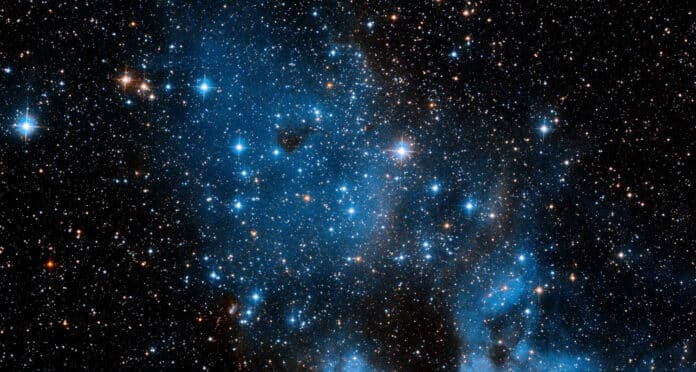Hubble recently captured a collection of a backdrop littered with tiny pinpricks of light glinting a few brighter stars. This collection, called NGC 1858- an open star cluster- is estimated to be around 10 million years old.
Located about 160,000 light-years away in the constellation Dorado – in the northwest region of the Large Magellanic Cloud- the NGC 1858 contains multiple massive stars. These stars can be seen shining brightly throughout the center of the image.
The surprising fact- the NGC 185 is also an emission nebula. The gas of the nebula emits its light at visible wavelengths, seen here as a faint cloud that populates the middle and bottom right of the image.
This young cluster is a complex collection because the stars are in various stages of evolution. The discovery of a protostar, a very young, developing star, within NGC 1858 suggests that star formation within the cluster may still be active or has only recently ended. Since the energy needed to ionize the nebula’s gas comes from stars with short lives, an emission nebula also shows that star formation recently took place in this area.
NASA said, “To survey these distant stars, scientists relied on the Hubble Space Telescope‘s unique resolution and sensitivity at visible and infrared wavelengths.”
